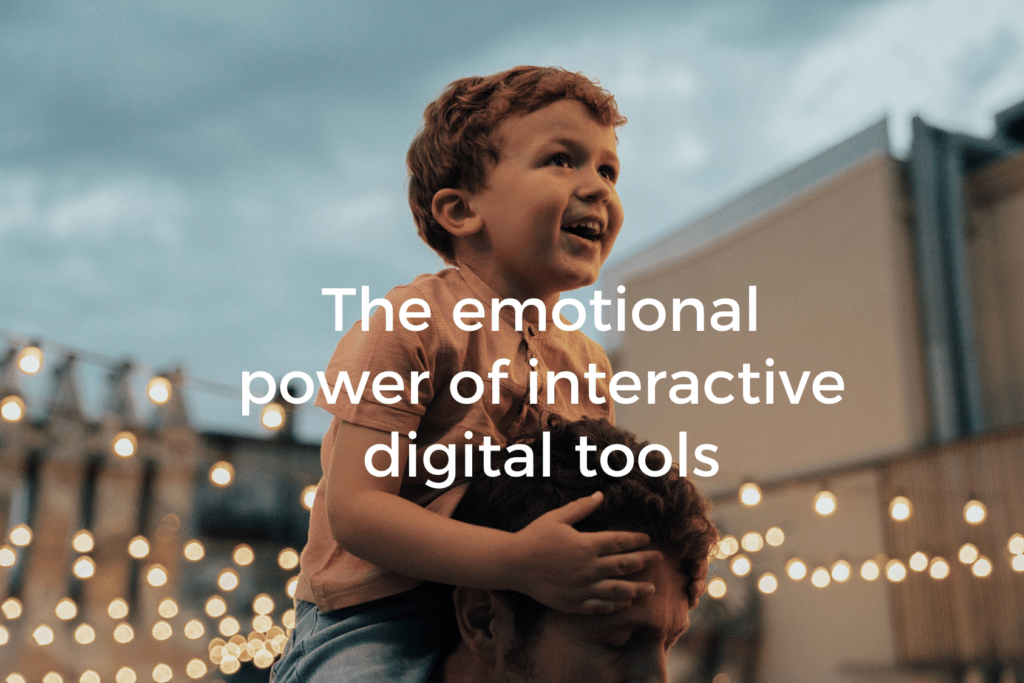Emotive Marketing Isn’t Just for Christmas
In the Marketing and Advertising world, Q4 is often overshadowed by the big ‘C’, which – while the dreaded word Coronavirus might spring to mind for many of us this year – actually stands for Christmas. This is the time when retailers battle for air time to make sure their Christmas advert garners the most exposure; usually heart-warming, a touch nostalgic and, evermore increasingly, directed by a top name or featuring a soundtrack produced by a stellar singer.
This year in particular, the pandemic ensured these ads were more poignant than ever. From Sainsbury’s “gravy song” to the moonlight performance by Amazon’s ballerina, the backdrop of the current health crisis struck heartstrings and had audiences longing for a ‘normal’ Christmas.
The reason these adverts produce such a reaction is the emotive response they encourage (ignoring the ones that just make you cringe). You may wonder why, as a financial marketer, I have analysed this retail-heavy sector of the market? It’s because the lessons here are transferrable to the world of finance. Here at Moreish, we bring feeling to finance.
But this doesn’t mean you need a massive TV production and media budget to evoke an emotional response from your audience. One of the chief ways we do this is through the use of interactive tools. And these work year-round, too, not just for Christmas. People need to connect with the purpose of your brand for marketing to make more than an incremental difference, whether this is through a tear-jerking advert or sliding scales on a web page.
What is an interactive tool?
An interactive tool allows users or financial advisers to enter a snippet of data relevant to their situation to produce a tailored set of results in order to demonstrate the need and engage your audience in your category or product. This could be health information for an insurance company to the average cost of a funeral.
Don’t take it personally – or maybe do?
The power of interactivity cannot be underestimated. Sometimes, marketing really is all about the bells and whistles. Whether brands are looking to capture their potential customer’s interest at the beginning or partway through their journey, a tool is a quick and easy way to personalise the customer experience and deliver a taste of the product on offer. By adding customisation, website visitors are more likely to make the full transition to customer.
The proof is in the (data-backed) pudding. A tool we built for insurance brand LV= called the Risk Reality calculator uses a few personal questions – focussed on current age, retirement age and whether the user is a smoker or not – to determine a unique risk profile and encourage the consideration of protection. The result is instant, a little shocking and, above all, informative.
The interactive tool has recorded over 300,000 calculations, with users spending around 3 minutes and 7 seconds on each session. To put that into perspective, the average time users spend on a website page is 15 seconds. 15 measly seconds. So, what’s drawing users to LV=’s page? It’s all about the tool, and that added element of personalisation. A report with the user’s name can be downloaded, and the results can be broken down into segments, prompting users to stay on the page, read and gather more information to make a more informed decision.
Cogito, ergo sum
Interactive tools are all about changing the user’s mindset. With the LV= tool, the challenge was altering people’s thoughts on health and life risks from “it will never happen to me” to “am I really prepared?”. When you don’t know the risks spending £100 a month on Income Protection seems inconceivable but when you understand the likelihood of being too ill to work before you retire and potential impact on your family of having no income it suddenly seems a no brainer.
Tools and calculators are a great way of changing attitudes towards products and opening up a difficult channel of conversation. It’s all about the money, money, money in finance, but this is a notoriously tough subject to navigate. Whether it’s asking for that 20 quid back that you lent your mate or choosing the best ISA to house your life savings, a tool can help open up these tricky dialogs and bill your brand as a top contender.
The scope of possibility with tools is endless. As long as you know the message you want to send to your audience, a tool is a great sales device that will help demonstrate your point – either directly to potential customers, or via intermediaries.
Computer says no
We’re living in an increasingly remote world, and one that sees us becoming more reliant on technology. People trust computer generated results and will trust your brand by association. So why not add that extra personalisation and boost sales?
Already got an idea for a tool? Or maybe you like the idea of creating a tool, but want some guidance? Either way, let’s talk…

